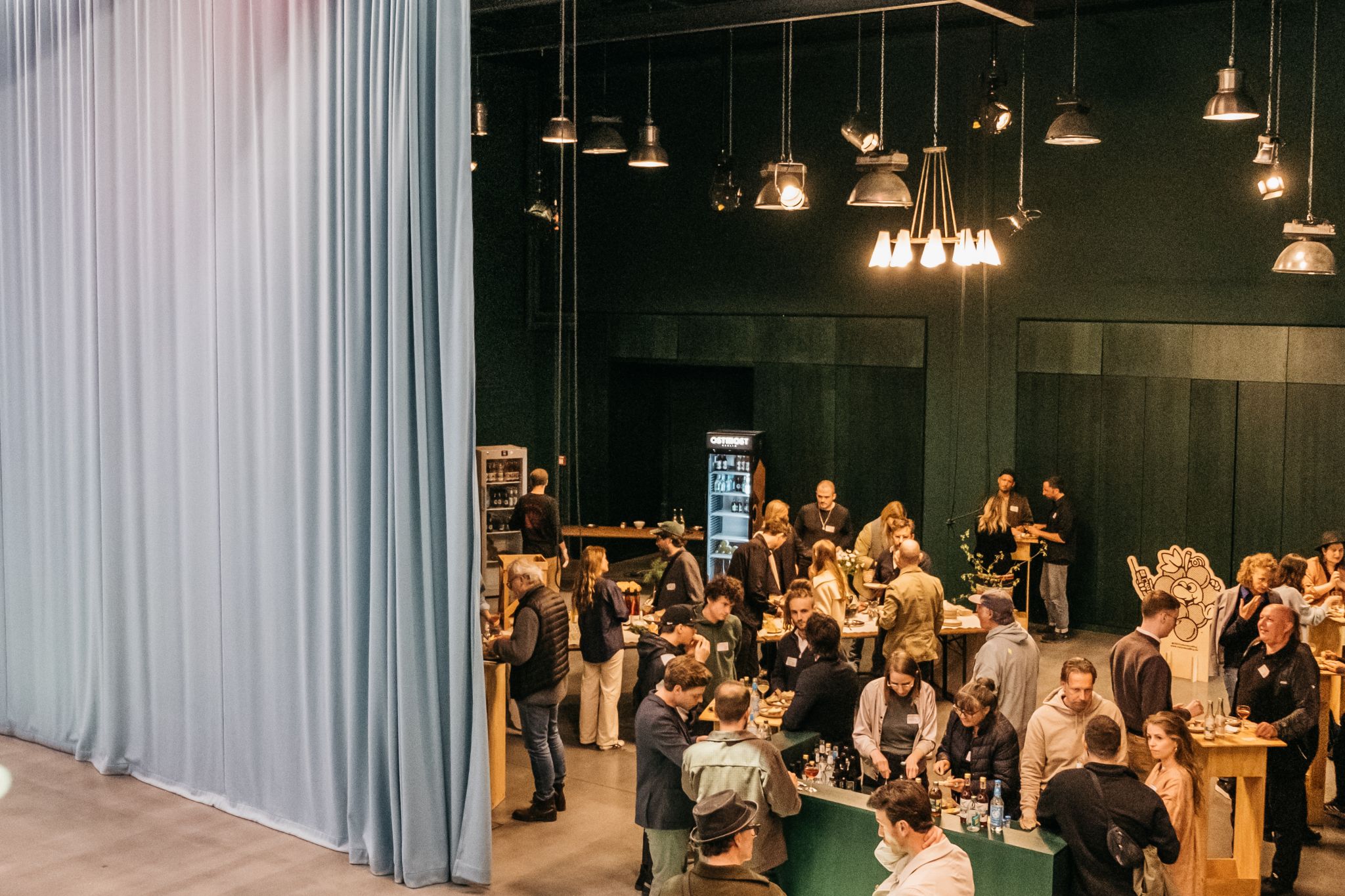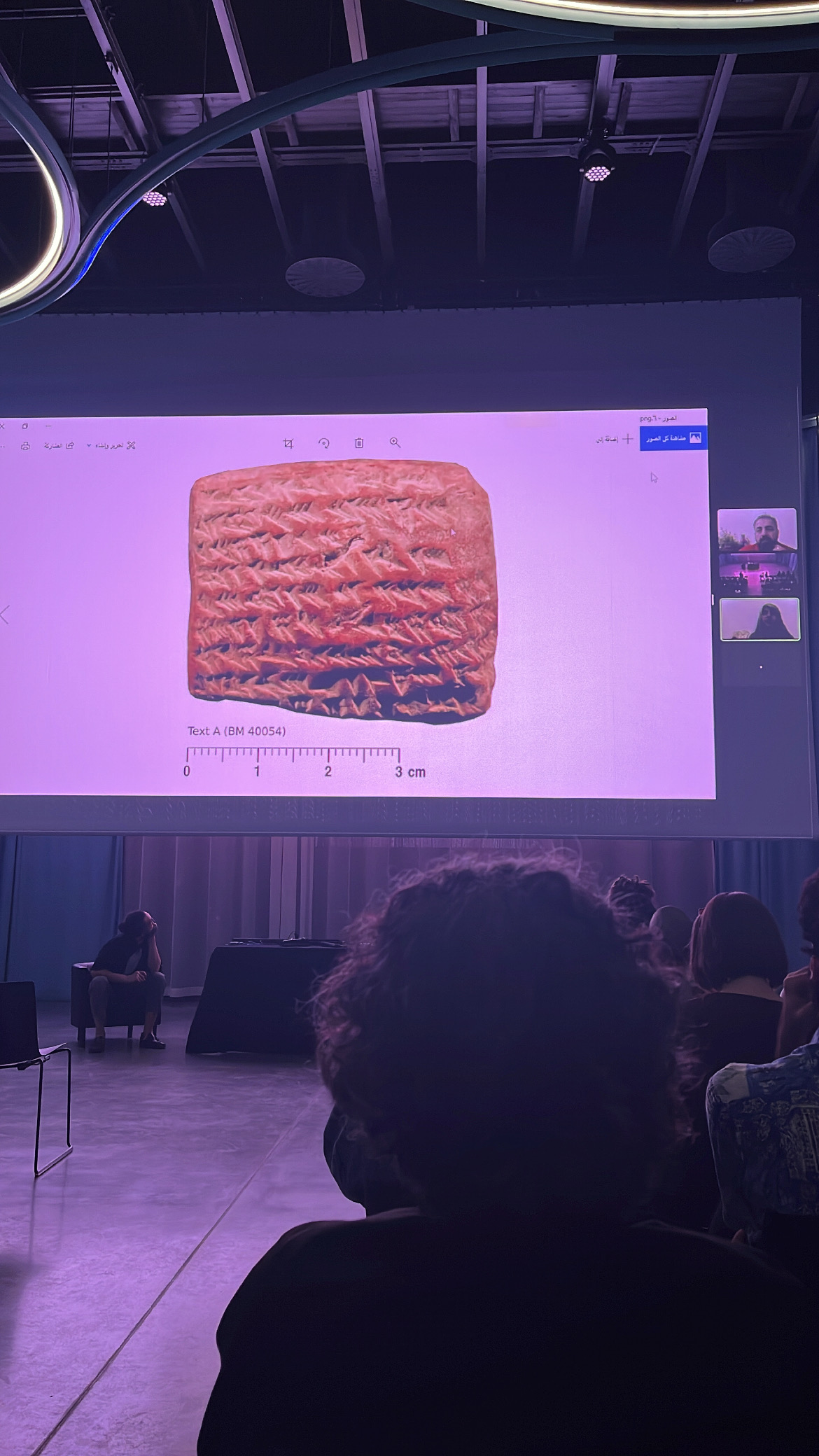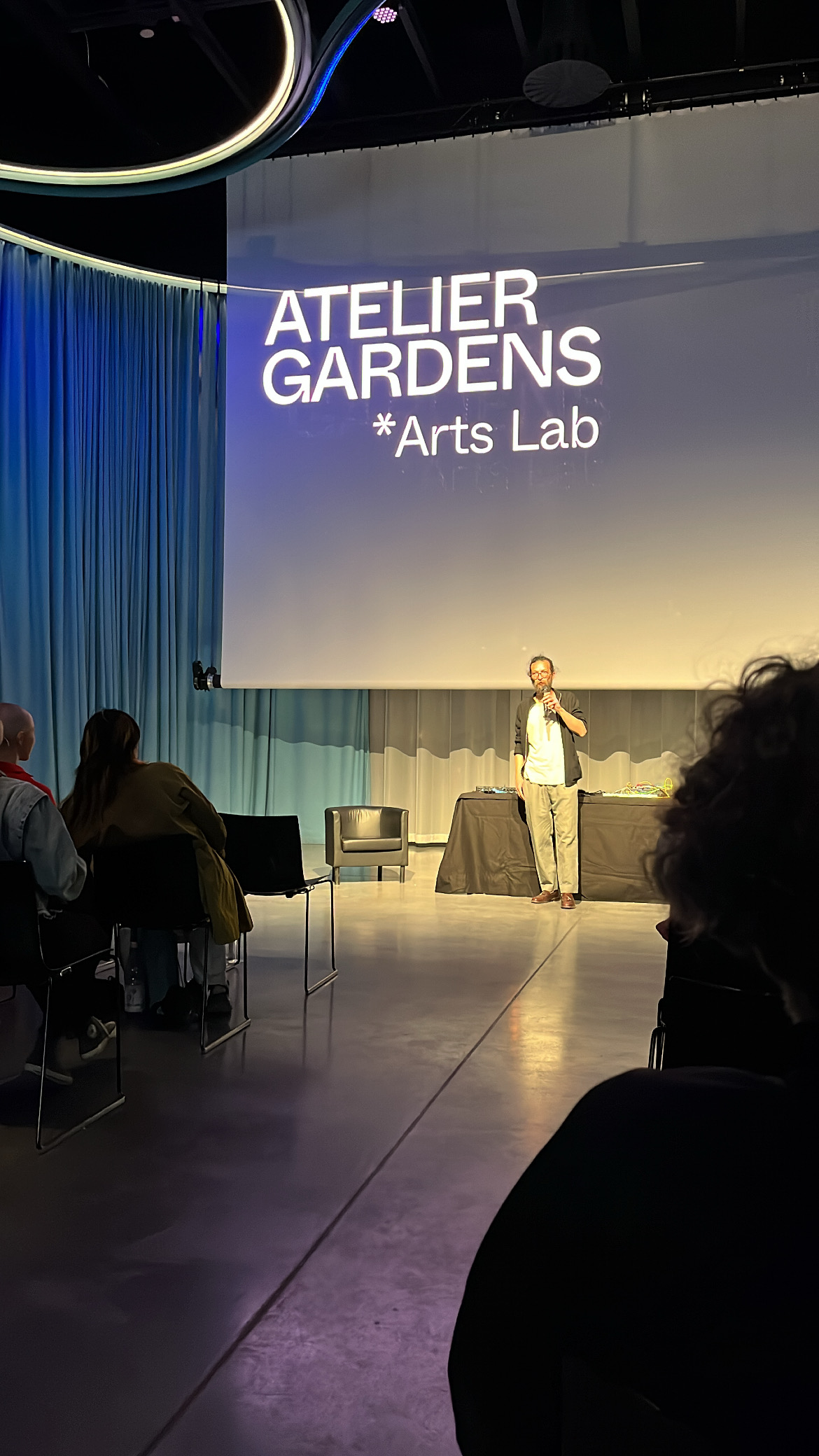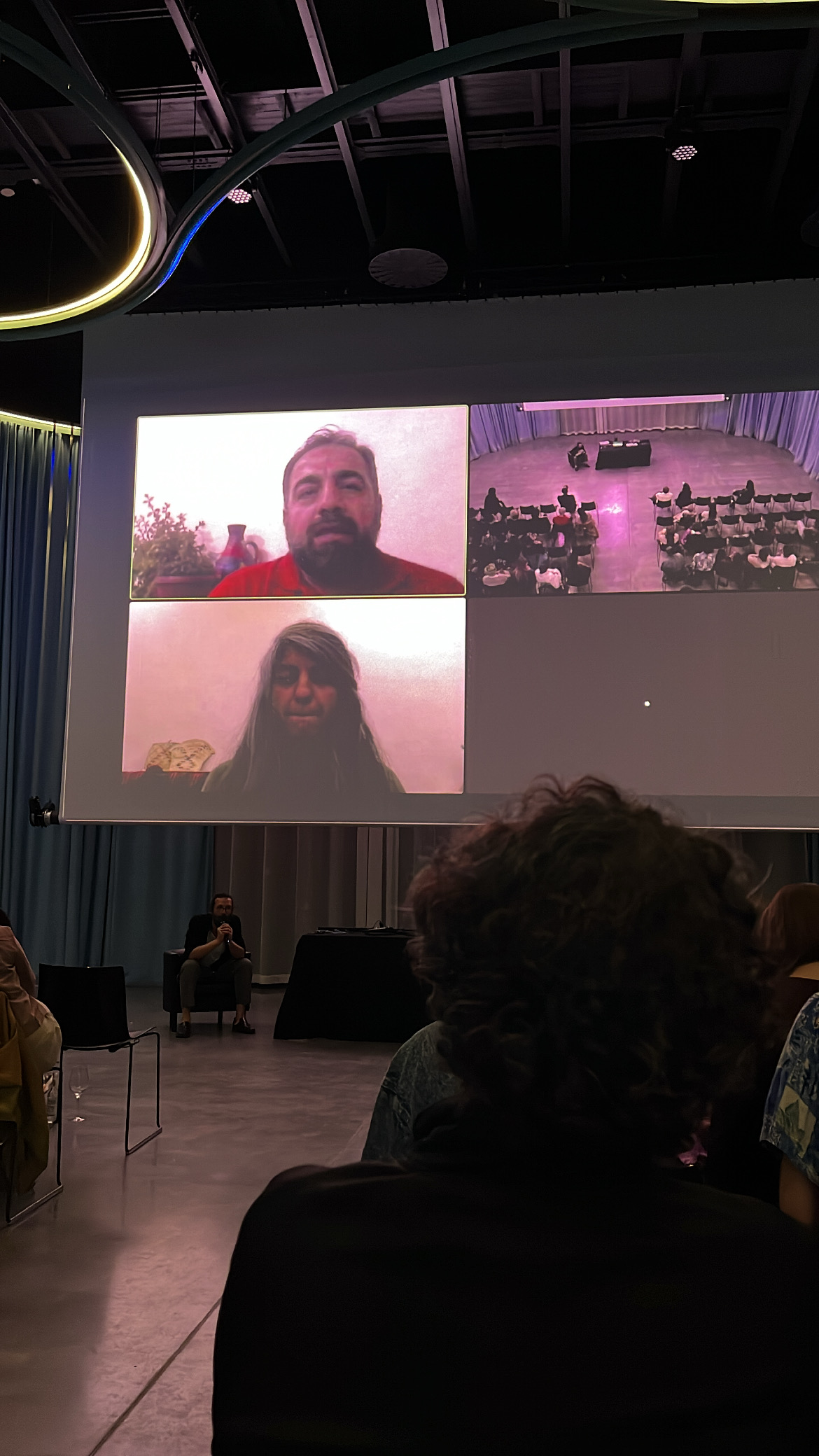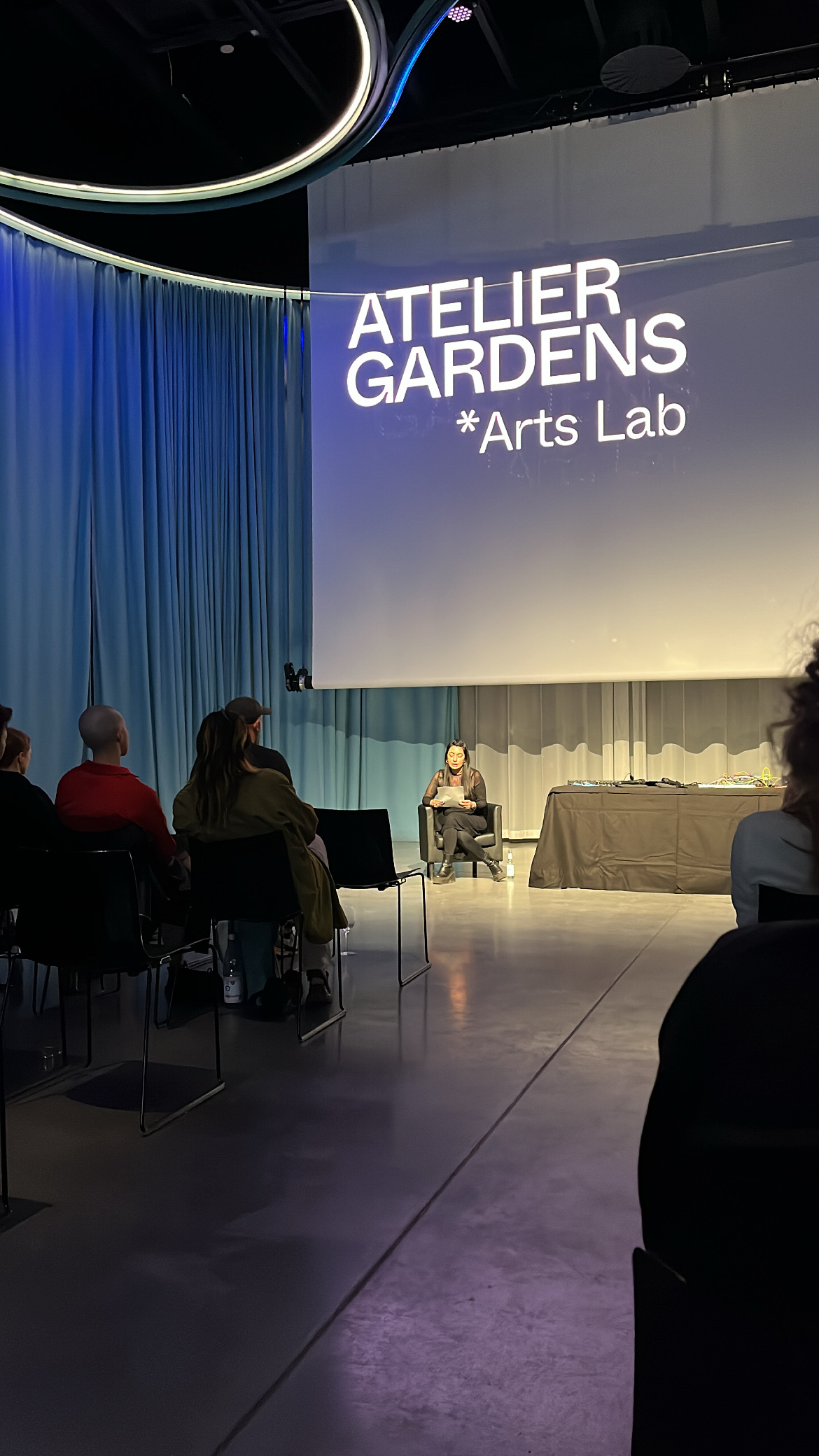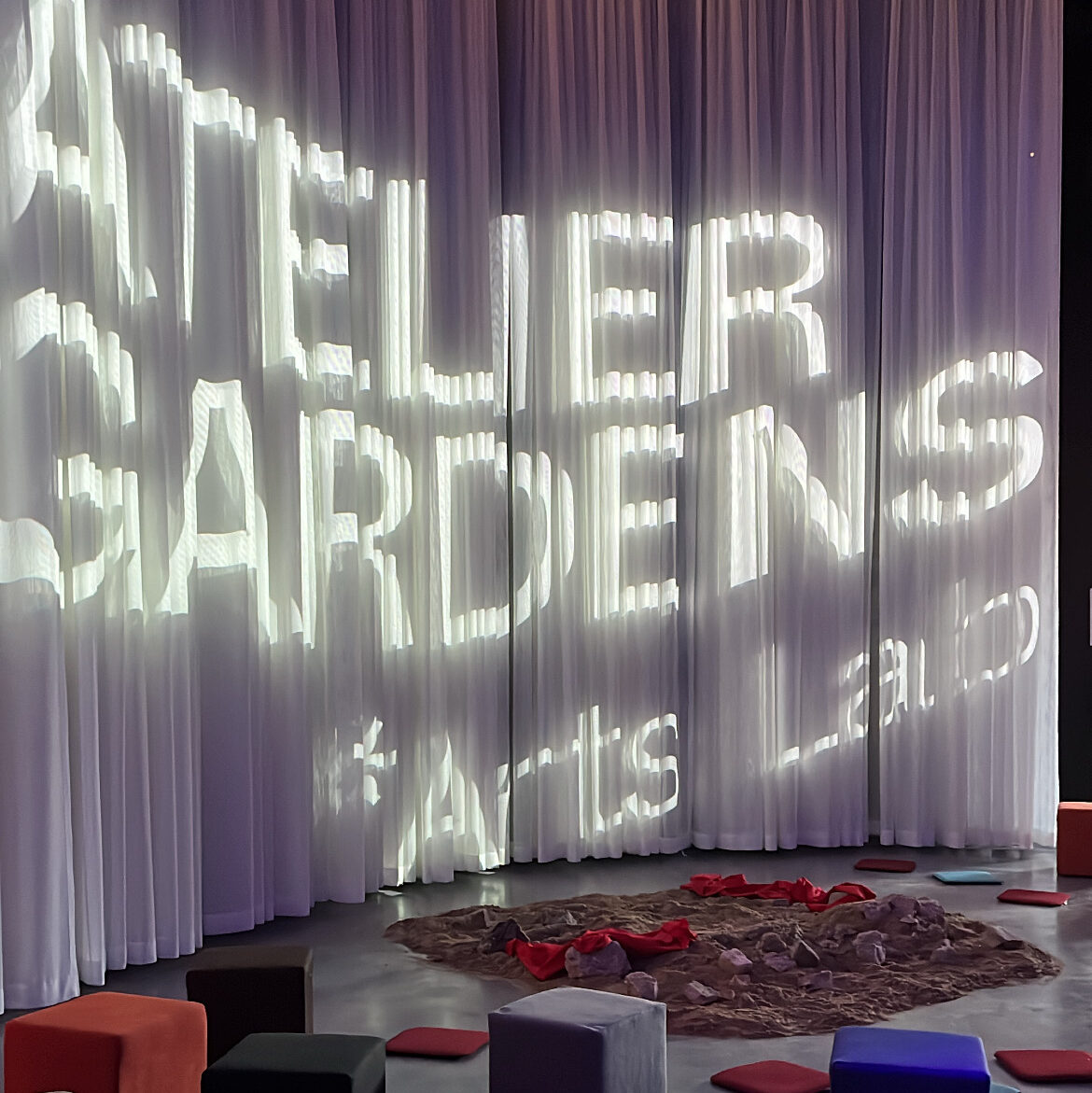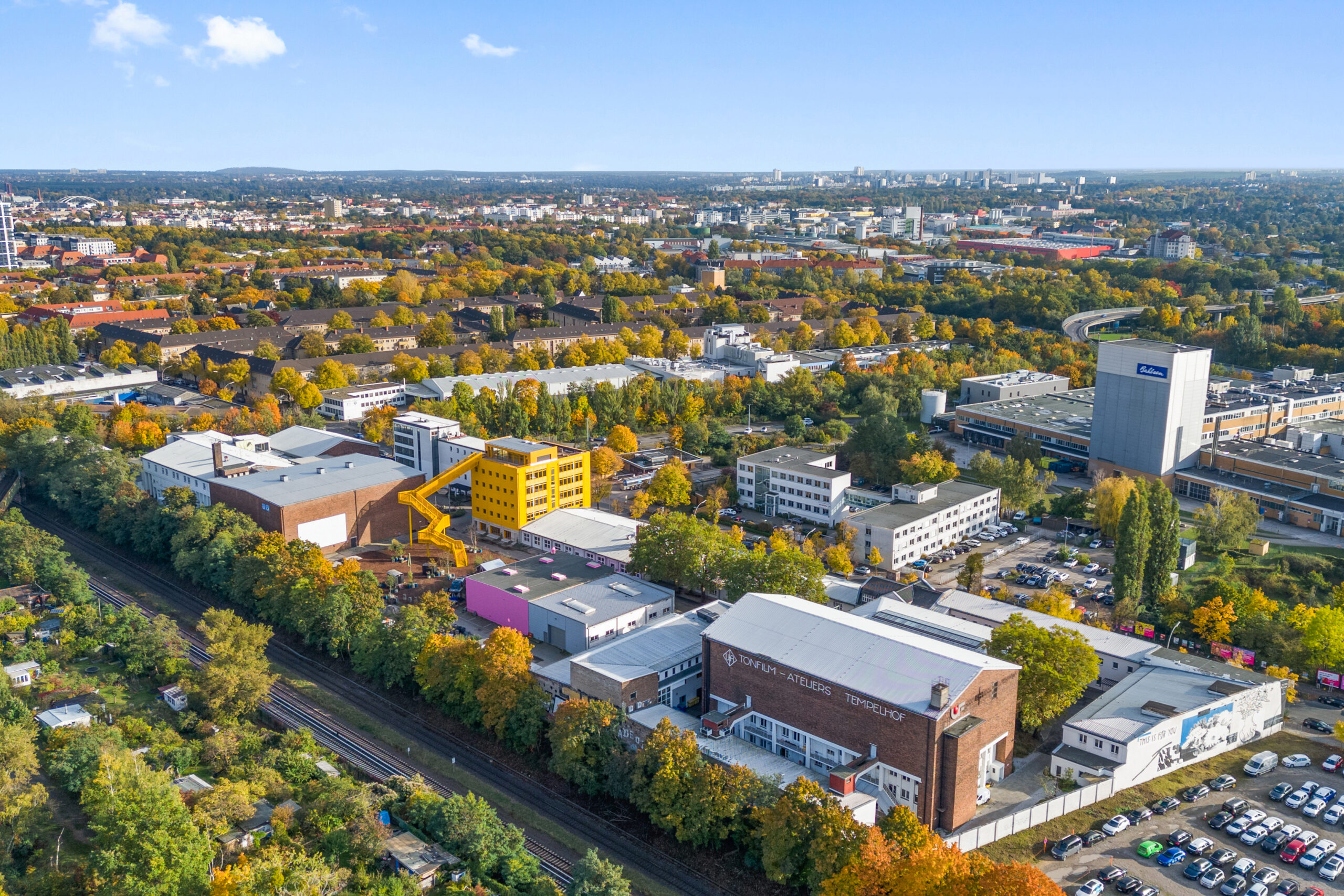From Clay Tablets to AI: Forms of Communication
08.06.2023
From Clay Tablets to AI: Forms of Communication
“Lanah? Lanah, we’ve lost you again.” The face of the archaeologist Lanah Haddad, who is brought in from Iraq via Zoom, is frozen on the screen stretched out in TON1. The irony of the situation is hard to miss on this evening, which is themed “From Clay Tablets to AI.” Ayham Majid Agha, the curator of the event series, smiles: “How else could we have explained AI better?”
An Interdisciplinary Approach
During the evening, in dialogue with the guests, we reflected on how we communicate with each other – sometimes from an artistic or academic perspective, and other times through lectures and performances. The performance artist Tiara Roxanne kicked things off with a lecture on the grammar of the word “gathering.” The rapid succession and repetition of words acted as meditation, inviting the audience to critically consider how digitisation has changed the way we remember, tell stories, share, collect and perceive who we are.
Roxanne’s performance was followed by a talk by Syrian archaeologist, Yasser Showhan. With Haddad’s (somewhat hesitant) translation, Showhan went into the origins of cuneiform writing, referring to Mesopotamian clay tablets. Very early on in the history of humankind, about 4000 years B.C. to be precise, people saw a benefit in recording things in writing: whether it was for trading purposes, documenting agricultural stocks, calculating, tracking astrological events, recording song lyrics, or communicating.
The evening became increasingly participatory. With music by Bashar Al-Darwish, the audience was introduced to the world of AI-generated sounds, which Al-Darwish himself described as the “sound of the future.” Before Roxanne moved on to explore the connections between AI and colonialism in another performance, guests were encouraged to express their own creativity on clay tablets. The evening gradually drew to a close with accompanying music and an open bar.
This Is Just The Beginning
This evening was the first in the “Artémon” series of events. The name was not chosen randomly: It’s a mixture of the English words “art” and “monster” because the event series is intended to offer a space for artists who are still a bit reluctant to present their own artworks—and the monsters behind them—in front of an audience. In addition, these explorative evenings are also meant to give guests the opportunity to discover the lesser-known sides of Atelier Gardens, such as Keller 7, Halle 12, or Studio 2.
If you want to stay informed about future events and learn more about life on our campus, you can subscribe to our newsletter or visit our website.
"From Clay Tablets to AI, how else could we have explained AI better?”
-
Ayham Majid Agha
Related news
